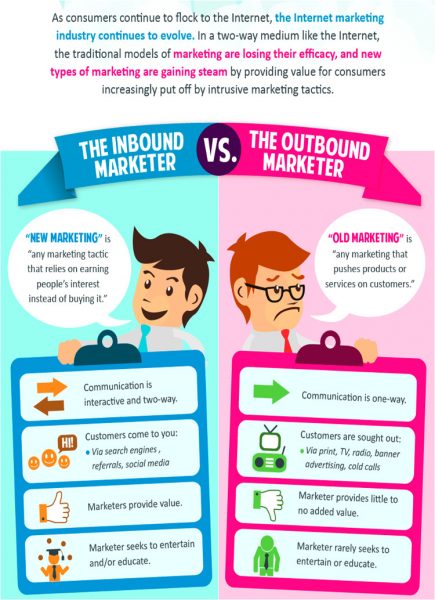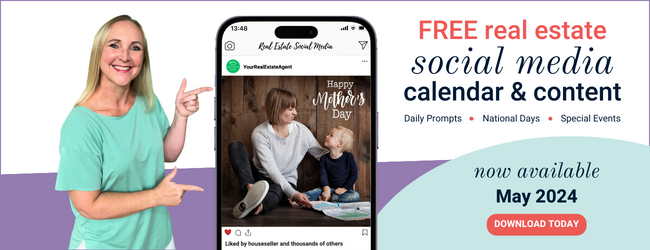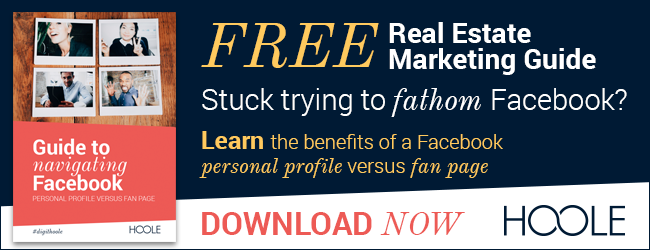Do you understand the benefit of Inbound Marketing? Real estate marketing has entered a new age where you can both grow your real estate reputation and establish trust with prospective clients before they’ve even met you. If you’re still making cold calls instead of warm calls then now is the time to listen up!
Inbound Marketing is a strategic marketing approach where, as a real estate business or real estate agent, you create and share valuable and relevant information with local property owners, on a consistent basis, to both build brand trust and attract new business.
If I told you that Inbound Marketing (namely a combination of content marketing and social media marketing) has been all I have used to build my brand – and that I’ve never had to make a cold call and have a steady stream of leads – would you take an interest then? Yes? Excellent.
A good friend of mine, and real estate industry expert, Stewart Bunn (First National Real Estate’s National Communications Manager) recently attended the worlds largest and most significant Inbound Marketing & Sales event in Boston, Massachusetts, USA.
I asked Stewart if he would contribute his knowledge and the key insights gleaned from the event as a blog for my website. Happily, he agreed, so read on for some thought-provoking advice from Stewart.
What is Inbound Marketing?
By Stewart Bunn
Real estate is a great example of an industry where a significant number of businesses remain stuck in the traditional paradigm of ‘outbound marketing’. What then is ‘inbound marketing’, how does it relate to real estate, and what is it about this methodology that leads more than 21,000 marketing and communications mavens to Boston each year? Well, first a little about the difference between ‘outbound’ and ‘inbound’ marketing.

Image source: Mashable and voltierdigital.com
As an industry, real estate advertises its product and service on billboards, buses, and bunting. We letterbox drop, door knock and cold call, shouting an all-too-familiar message about customer service to a disinterested, disengaged and disbelieving audience. In short, we hope in vain that somebody out there is sufficiently struck by that message to call our office. Yet, all of these methods represent interruption in a world choking on marketing messages.
How else would you explain the industry’s general approach to social media? Instead of being social, helpful, and sharing expertise with our local communities, too many agents still use Facebook as an alternative to newspapers; a soapbox from which to host a monologue about our awards, our listings and ourselves. This approach largely falls on deaf ears; fails to resonate with consumers, and costs you the respect of your audience.
‘Inbound Marketing’ turns this approach completely on its head. It’s about storytelling, not selling. Being more helpful, sharing expertise, being less salesman-like. It’s about drawing people to your business by building trust through content marketing and solving the pain points that people recognise personally. It’s about addressing the problems or challenges that lead people to you for your expertise in the first place.
The annual #Inbound conference
Hubspot is a software company that specialises in helping companies manage their Inbound Marketing activities. The company’s annual conference, aptly named #Inbound, brings together over 21,000 marketing and sales professionals from across the globe, with the purpose of providing inspiration, education, and the connections needed to grow and transform business.
With keynotes from Michelle Obama (Former First Lady of the USA), Brené Brown (Researcher & best selling author), Stewart Butterfield (CEO, Slack), Lisa Gerber (Big Leap Creative), Deborah Gelardi (Creative Director, Refinery) and Elaine Welteroth (Editor in Chief, Teen Vogue), and over 245 workshops, panels and sessions over four days, the schedule was fascinating and intense.
The key learnings and take aways
1 – Facebook Messenger
Without a doubt, the most significant change business will face in the immediate future is a transition to Facebook Messenger as a new marketing channel. As mobile device usage continues to grow exponentially, the rate at which consumers are downloading Apps is declining at a surprising rate. Evidently, the novelty of Mobile Apps is wearing a little thin. Now, we’re spending more time in our messenger apps than any other social media platform – 1.3 billion messages per month – and B2C messaging is consequently on the rise.
2 – Chatbots
Chat is also anticipated to become the centre of the universe for lead generation, event management, eCommerce and customer service. Naturally, a range of ‘chatbot’ services have sprung up to service this need, but the progress of artificial intelligence (AI) will play a significant role in improving their effectiveness for many enterprises.

3 – Storytelling
To continue to attract customers into the future business will need to pivot from an outbound focus to inbound. For those that have already done so, they’ll need to get better at understanding their customers, pinpointing the challenges they face, and telling the story of how their product or service solved a problem.
All of this means that a greater analysis of what makes quality content will be needed and businesses will need to show empathy for their customers as well as find the niches in which they can stand out and excel.
Amongst some of the most interesting sessions presented at Inbound17 were the top 10 Facebook and Twitter content promotion hacks of 2017, using the power of story to influence action, words and copy constructs that make content instantly more persuasive, video strategies to drive leads, and winning customers with artificial intelligence and bots.
4 – Trust
Another clear thread running throughout the conference was the theme that awareness is no longer the ‘be all’ in marketing. Trust is now essential. Seventy-five per cent of people will not deal with a company if there is not already some fundamental form of trust established.
To continue to successfully reach existing and new generations of customers a business must make time to be more creative, more authentic, more personal and more able to identify what it is that customers are seeking from its product or service.
Special thanks to Stewart Bunn for contributing this article to the Hoole.co blog. Stewart’s day job is managing digital and communications for First National, Australia-wide.
Connect with Stewart via LinkedIn.


Join the Conversation - add your thoughts